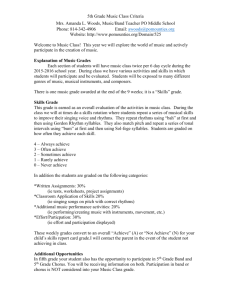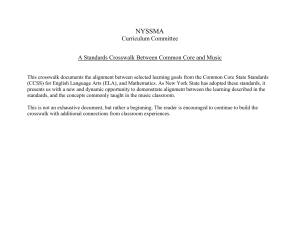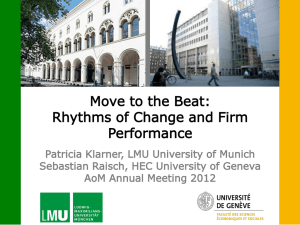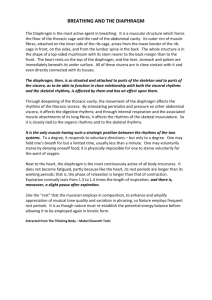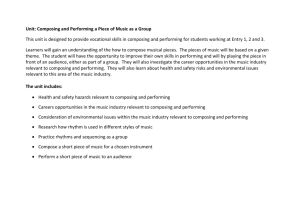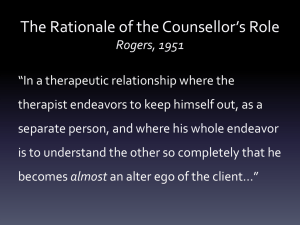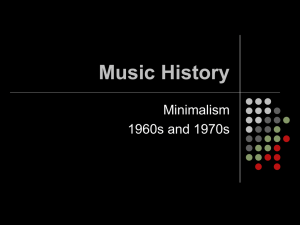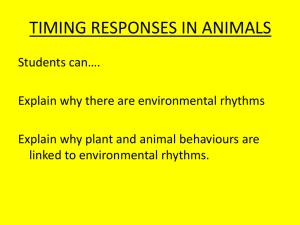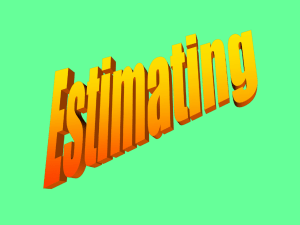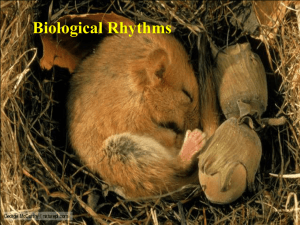Welcome! 4th Grade-Sixteenth Note Rhythms-PLC
advertisement
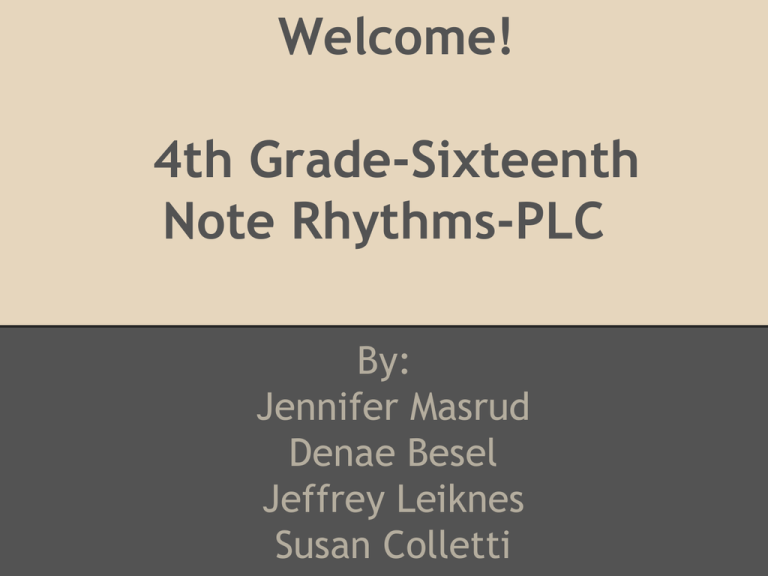
Welcome! 4th Grade-Sixteenth Note Rhythms-PLC By: Jennifer Masrud Denae Besel Jeffrey Leiknes Susan Colletti Smart Goal and Standards being addressed. Smart Goal: 85% of 4th grade students in music class will score 80% or higher on our sixteenth-note rhythm post test by March 20, 2013. Standards used: Strand I: Artistic Foundations Standard 2: Read and notate music using the standard notation such as quarter, half, and eighth notes and rests, the lines and spaces of the treble clef, and time signatures. Strand II: Artistic Process: Create or Make Standard 1: Improvise and compose rhythms, melodies and accompaniments using voice or instruments to express a specific musical idea. Our Pre Test Listen Circle the correct letter below that matches the rhythms performed on the recording. Our Pre Test Continued Notate Create four rhythm patterns of your own using sixteenth note patterns... (It does show examples on which notes you can use to create) Our Pre Test Continued Perform Show what you know and read the following rhythm patterns. Our Rubric Category 4-Proficient 3-Development 2-Novice 1-Beginner Listen Identify 3 correct listening examples. Identify 2 correct listening examples. Identify 1 correct listening example. Identify 0 correct listening examples. Notate The rhythms are notated accurately and the rhythmic syllables are written accurately for all 4 rhythms. The rhythms are notated accurately and the rhythmic syllables are written accurately for 3 rhythms. The rhythms are notated accurately and the rhythmic syllables are written accurately for 2 rhythms. The rhythms are notated accurately and the rhythmic syllables are written accurately for 1 rhythm. Perform The Beat is steady at 75. The rhythmic syllables and clapped rhythms are performed accurately on all 4 examples. The Beat is steady at 75. The rhythmic syllables and clapped rhythms are performed accurately on 3 examples. The Beat is steady at 75. The rhythmic syllables and clapped rhythms are performed accurately on 2 examples. The Beat is steady at 75. The rhythmic syllables and clapped rhythms are performed accurately on 1 example. Strategies to meet our goal: *Flashcards *Compose their own four beat rhythm patterns. *Play 16th note rhythms on various instruments. *Perform their compositions for each other. *Practice the rhythms from the test. Results Percentages: Jeff met our goal but the rest did not meet the goal. Effect Size: (In an assessment workshop that Denae attended we found out a way to find the effect size between the pre and post test to see if our students increased the learning. We were told that anything above a .4 means that we were effectively teaching the students the concept) Jennifer's effect size: 2.33 for one class and 1.4 for the other class Susan's effect size: 1.35 Jeffrey's effect size: 1.19 Denae's effect size: 1.59 for one class and 1.74 for the other class Reflections • • • • Specific attention we gave to 16th notes provided mastery instead of just exposure. New teachers to the district brought new ideas to the table. Our students took this PLC goal seriously. The active assessment was challenged by: -Demographics • • -Scheduling (limited time) Our PLC group was cohesive, dedicated, and flexible. We believe that PLC groups thrive when the members are: -Like minded -Supportive -Focused on student achievement Where do we go from here? • • • • Starting in earlier grades. We need to provide more strategies to continually improve student achievement. More opportunity to collaborate with music colleagues with an open mind. Used our results to shape our future teaching.
